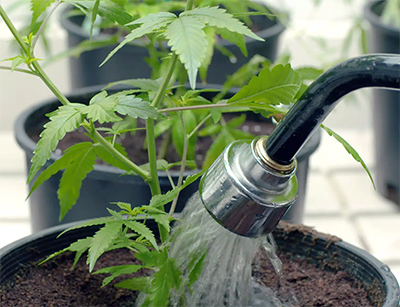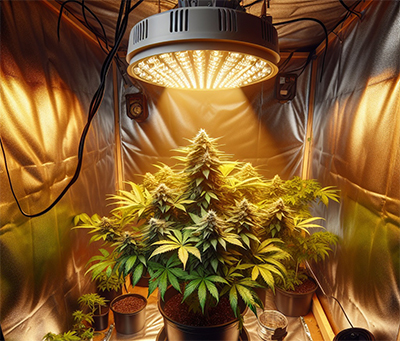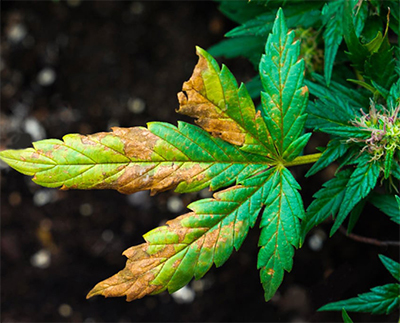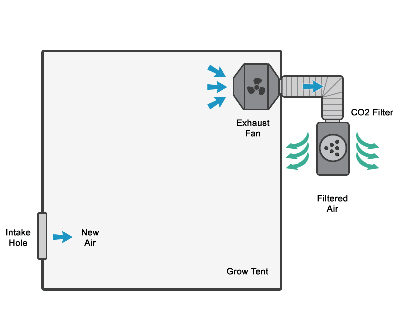Growing cannabis at home can be a rewarding hobby. However, the process can be more complicated than it seems. Many beginners make avoidable mistakes that affect the quality, potency, and yield of their plants. If you’re just getting started, learning about these common pitfalls can help you avoid them and lead to a successful cannabis harvest.
In this article, we’ll cover some of the most frequent mistakes beginners make when growing cannabis, and offer tips on how to avoid them. By the end, you’ll be better equipped to grow healthy, potent plants that thrive from seed to harvest.
Choosing the Wrong Strain
One of the first decisions you’ll make as a cannabis grower is selecting a strain to grow. Not all strains are created equal, and some are easier for beginners than others. Many first-timers mistakenly pick strains based on potency or popularity without considering growing difficulty. For example, some strains are more resistant to pests and mold, while others require meticulous environmental controls.
How to Avoid This Mistake: Choose beginner-friendly strains like Northern Lights, Blue Dream, or Green Crack. These strains are known for their resilience, relatively fast growth, and ability to thrive in varying conditions. Do your research on each strain’s growing requirements and ensure they align with your skills and environment.
Overwatering or Underwatering
 Proper watering is essential for the health of your cannabis plants, and it’s an area where many beginners go wrong. Overwatering is the most common mistake, as it can lead to root rot and suffocate your plants. Conversely, underwatering deprives the plant of the moisture it needs to grow and absorb nutrients, resulting in stunted growth.
Proper watering is essential for the health of your cannabis plants, and it’s an area where many beginners go wrong. Overwatering is the most common mistake, as it can lead to root rot and suffocate your plants. Conversely, underwatering deprives the plant of the moisture it needs to grow and absorb nutrients, resulting in stunted growth.
How to Avoid This Mistake: Water your plants only when the top inch of soil is dry. Consider the size of your containers, the humidity level, and the temperature when deciding how much water your plants need. A good rule of thumb is to lift the pot after watering to understand its weight. When it feels lighter, it’s time to water again.
Using the Wrong Growing Medium
Not all growing mediums are suited for cannabis cultivation. Some beginners opt for regular garden soil, which may not provide the necessary drainage and aeration that cannabis requires. Heavy, clay-based soils can compact around the roots, restricting oxygen flow and water drainage, which hampers plant growth.
How to Avoid This Mistake: Opt for a well-draining soil mix specifically designed for cannabis, such as a blend of coco coir, perlite, and vermiculite. These mediums allow proper root oxygenation and water retention without becoming waterlogged. You can also use pre-mixed soils with added nutrients to simplify the growing process.
Incorrect Lighting
 Cannabis is a light-loving plant, but providing too much or too little light can cause serious problems. New growers often don’t realize that the type and amount of light your plants receive during each growth phase (vegetative and flowering) significantly impacts their health and yield. Inadequate light will cause your plants to stretch, with long internodes and small buds, while too much light can burn your plants.
Cannabis is a light-loving plant, but providing too much or too little light can cause serious problems. New growers often don’t realize that the type and amount of light your plants receive during each growth phase (vegetative and flowering) significantly impacts their health and yield. Inadequate light will cause your plants to stretch, with long internodes and small buds, while too much light can burn your plants.
How to Avoid This Mistake: Invest in quality grow lights, such as LED, CFL, or HID lights, and follow a proper light schedule for each growth stage. During the vegetative stage, cannabis plants need at least 18 hours of light and 6 hours of darkness. In the flowering stage, they require a 12/12 light/dark cycle. Keep the lights at a safe distance from the plants to avoid heat stress or light burn.
Neglecting pH Levels
pH levels play a crucial role in nutrient absorption for cannabis plants. Many beginners don’t monitor the pH of their water and soil, leading to nutrient deficiencies or toxicities. When the pH is too high or too low, the plant cannot absorb nutrients properly, even if they are present in the soil or water.
How to Avoid This Mistake: Use a pH meter to regularly test the pH of your water and soil. Cannabis thrives in slightly acidic conditions, with an ideal pH range of 6.0 to 7.0 for soil and 5.5 to 6.5 for hydroponics. If the pH is off, adjust it with pH up or down solutions to maintain optimal nutrient absorption.
Overfeeding Nutrients
 It’s tempting for new growers to think that the more nutrients they feed their plants, the bigger and better the yield will be. Unfortunately, overfeeding can cause nutrient burn, which results in brown, crispy leaf tips and stunted growth. Too many nutrients can also lead to nutrient lockout, where plants are unable to absorb necessary minerals, leading to deficiencies.
It’s tempting for new growers to think that the more nutrients they feed their plants, the bigger and better the yield will be. Unfortunately, overfeeding can cause nutrient burn, which results in brown, crispy leaf tips and stunted growth. Too many nutrients can also lead to nutrient lockout, where plants are unable to absorb necessary minerals, leading to deficiencies.
How to Avoid This Mistake: Stick to the feeding schedule provided by your nutrient supplier, and always start with half the recommended dose. Observe how your plants respond before increasing the dosage. Less is often more when it comes to feeding cannabis, and flushing your plants with plain water periodically can help prevent nutrient buildup.
Ignoring Temperature and Humidity
Cannabis plants thrive in specific environmental conditions, particularly when it comes to temperature and humidity. Too much heat can stress your plants, while too little can stunt their growth. Similarly, improper humidity levels can encourage mold growth or inhibit plant development. Many beginners overlook these factors, assuming cannabis can tolerate a wide range of conditions.
How to Avoid This Mistake: Monitor the temperature and humidity in your grow space closely. During the vegetative stage, cannabis plants prefer temperatures between 70-85°F (20-30°C) and humidity levels around 40-70%. During the flowering stage, lower the humidity to 40-50% and maintain temperatures between 65-80°F (18-26°C). Use fans and ventilation systems to regulate the environment.
Harvesting Too Early
After months of careful cultivation, beginners often make the mistake of harvesting too early. It’s common to feel excited and eager to see the fruits of your labor, but harvesting prematurely can significantly impact potency and yield. Early harvesting results in lower THC levels and smaller buds, which won’t deliver the desired effects.
How to Avoid This Mistake: Be patient and monitor the trichomes (tiny resin glands on the buds) to determine the right time to harvest. Use a magnifying glass to examine them closely. When the trichomes are mostly milky white, with some turning amber, it’s the optimal time to harvest for maximum potency.
Lack of Proper Ventilation
 Proper airflow is critical for cannabis growth, yet many beginners overlook the need for ventilation. Poor ventilation leads to stagnant air, which increases the risk of mold, mildew, and pest infestations. It can also create hot spots in your grow room, causing heat stress.
Proper airflow is critical for cannabis growth, yet many beginners overlook the need for ventilation. Poor ventilation leads to stagnant air, which increases the risk of mold, mildew, and pest infestations. It can also create hot spots in your grow room, causing heat stress.
How to Avoid This Mistake: Set up a reliable ventilation system, including fans to keep air circulating. If growing indoors, use an exhaust fan to remove stale air and bring fresh air into the grow space. This will help maintain a stable environment and keep your plants healthy.
Not Learning from Mistakes
Every cannabis grower, even experienced ones, will make mistakes along the way. The key to success is learning from those mistakes and improving with each grow cycle. Some beginners get discouraged after a failed harvest and give up too soon.
How to Avoid This Mistake: Document your growing process, noting what works and what doesn’t. Don’t be afraid to experiment and adjust your techniques. The more you grow, the more you’ll learn, and your skills will improve over time.
Final Thoughts
Growing cannabis can be a deeply rewarding experience, but it’s easy to make mistakes if you’re new to the process. By avoiding these common pitfalls—choosing the right strain, watering correctly, providing proper light, and monitoring pH, among others—you’ll set yourself up for success. Take the time to learn, adjust, and enjoy the process, and you’ll be on your way to producing high-quality cannabis at home.

